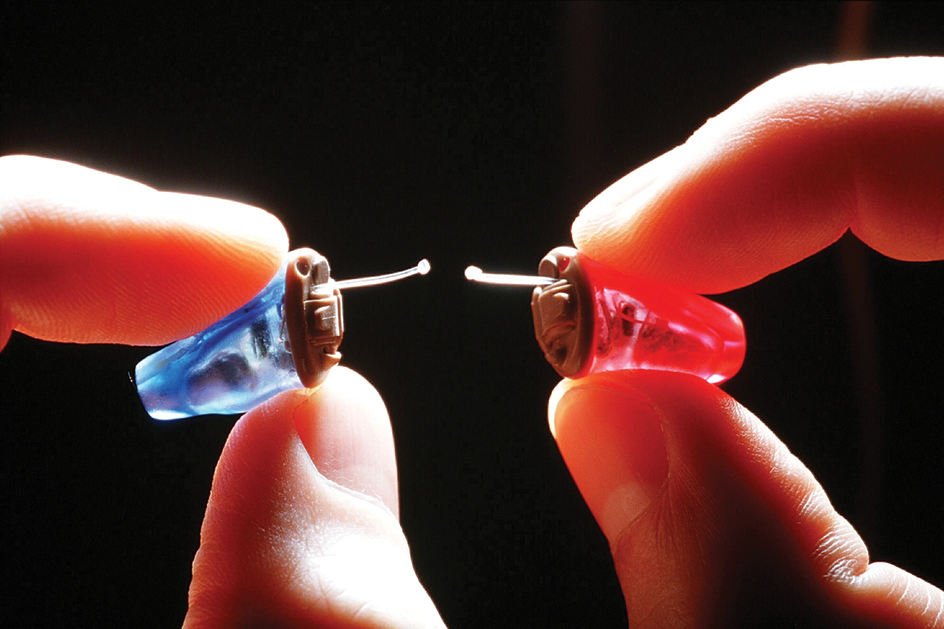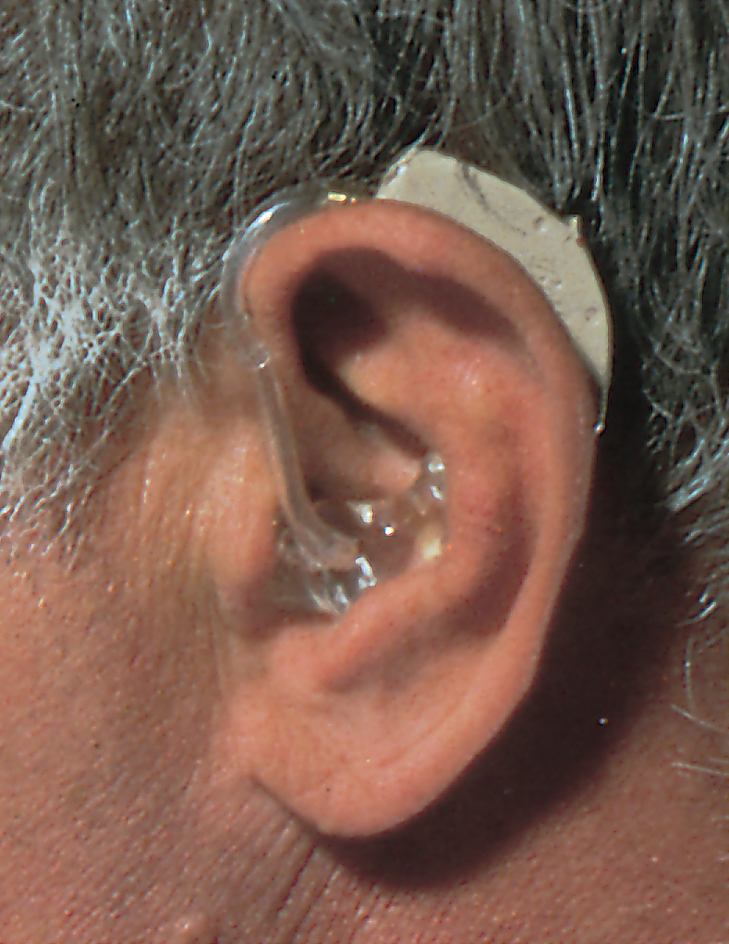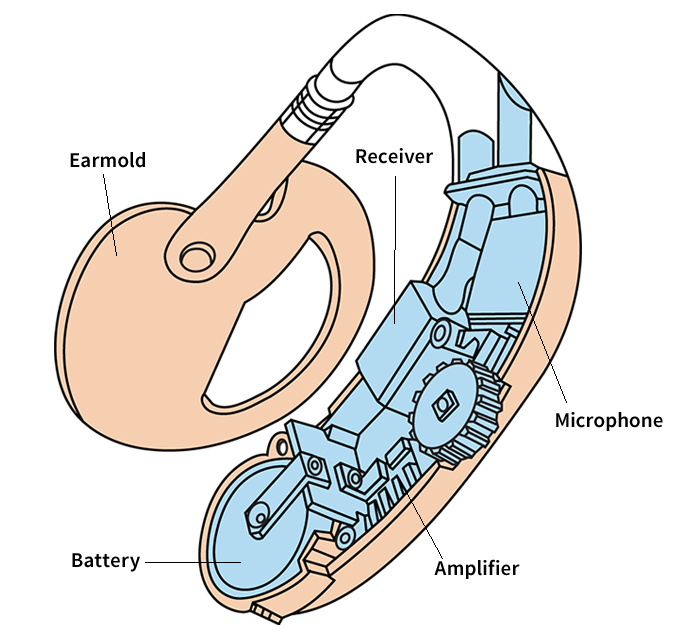Hearing aid is a device typically worn inside or behind the ear that amplifies sound for use by people who cannot hear well. Many individuals with hearing loss depend on such devices, which may enable them to use a telephone, enjoy music, and more easily follow a conversation. Manufacturers sell millions of hearing aids each year. Most hearing aids are sold to people over 65 years of age.

Modern hearing aids come in a variety of styles, but all of them have four basic components. These are: (1) a microphone, (2) an amplifier, (3) a receiver, and (4) a battery. The microphone picks up sound and changes it into an electrical signal. The amplifier increases the strength of the signal. The receiver works like a tiny loudspeaker, changing the signal back into sound that can be heard by the user. The battery supplies power for the operation of the aid.
Styles.
Most hearing aids used today fit inside the ear or just behind it. People tend to prefer smaller models because they are less conspicuous on the wearer.

The in-the-ear (ITE) style of hearing aid ranks as the most commonly used style. It consists of an amplifier, microphone, and speaker in a shell-shaped container. The container is custom fitted to the shape of an individual’s ear and sits on the opening to the ear canal.
The in-the-canal (ITC) hearing aid fits down in the lower portion of the ear canal. The completely-in-the-canal (CIC) style can be placed even more deeply in the ear canal. Only a tiny portion of it shows at the canal’s opening. The ITC and CIC styles are smaller and less powerful than the ITE style. But they are popular because they are the least visible of all external hearing aids.
In the behind-the-ear (BTE) style, a small case that fits behind the ear houses the electronic components. The sound is delivered from the hearing aid to the ear canal through tubing and an earmold. An earmold is a piece of plastic or other soft material molded to fit in the ear.

In the past, many people wore body hearing aids. These devices could be attached to a belt or kept in a pocket and connected to the ear by a wire. Other hearing aids could be worn attached to eyeglasses. As manufacturers developed smaller, more powerful hearing aids, these bulkier styles declined in popularity.
History.
People have used hearing aids since the 1600’s. The first hearing aid, a horn-shaped device, gathered sound and funneled it into the ear. Electric hearing aids first appeared about 1900. These devices used a carbon microphone and other technology developed for use in the telephone. Early electric hearing aids were bulky and provided little help to people with severe hearing loss. Acoustic fans, sometimes called hearing fans, also appeared about 1900. These fan-shaped instruments were made of a thin, hard rubber called vulcanite. The user held the edge of the acoustic fan between the teeth and bent the device toward the sound. The sound vibrations traveled from the fan, to the teeth, to the jawbone and the skull, and finally to the auditory nerve. The auditory nerve carries sound impulses to the brain.

Inventors developed new types of electronic hearing aids about 1920. At first, these devices were bulky and inconvenient, needing large, costly batteries. By 1930, wearable aids based on devices called vacuum tubes appeared. These aids used a crystal microphone, a vacuum-tube amplifier, and two batteries. They were more compact and easier to carry and conceal than earlier models. These factors helped many people with hearing loss overcome their reluctance to use hearing aids.
Devices called transistors began replacing vacuum tubes in hearing aids in the early 1950’s. Transistor hearing aids were dramatically smaller than vacuum tube models. They were also less expensive to operate because they required only one battery. The small size of the components made BTE and later ITE styles possible.
Some hearing aids use analog technology—that is, they convert incoming sound waves into a varying electric voltage or current. Such aids amplify the entire range of incoming sound. Other hearing aids use digital technology, converting incoming sounds to numeric code that can be processed by a computer chip. Digital devices can separate background noise from speech, eliminating some of the distortion that may occur in analog units. The first fully digital hearing aids became available in the mid-1990’s. Some hearing aids combine analog and digital components.
See also Deafness (Assistive technology).
